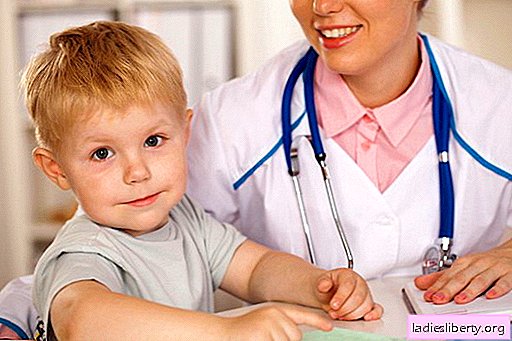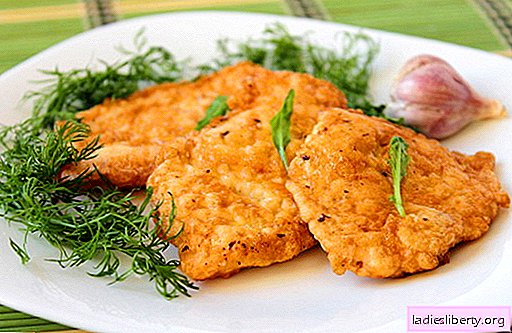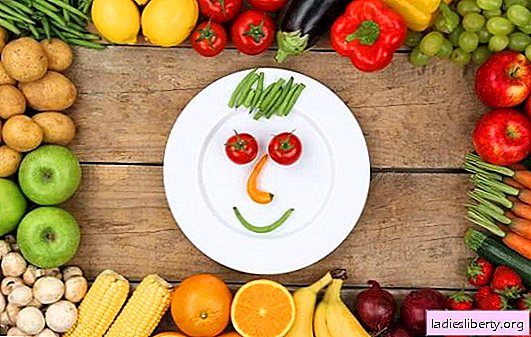
The world around the child is full of various substances. Some are in contact with his skin and mucous membranes, others get inside with food and breathing. If there is a predisposition to acute reactions, then individual interactions will cause an inflammatory process with various manifestations - which will be discussed in this article.
Child allergy
Allergies in children - the increased sensitivity of the body (the immune system) to the effects of endogenous or exogenous factors. Some doctors recognize that congenital allergy does not happen. But if the closest relatives in childhood or later suffered from it, then the likelihood of reactions in the first year of life is very high. However, they can appear much later.
Types of allergies in children
1. Food allergies. Problems arise when using individual foods. Manifested in the form of urticaria, neurodermatitis or eczema, problems with the gastrointestinal tract.
2. Drug allergies. This is a reaction to taking pills, injections, inhalations. Symptoms - nausea, anaphylactic shock, urticaria, changes in the composition of the blood.
3. Respiratory allergies. Reaction to sharp smells, dust, flower pollen, animals, microorganisms. Symptoms: lacrimation, varying degrees of swelling, sinusitis, tracheitis, rhinitis, laryngitis.
4. Cold allergy. The reaction of the child's body to extreme cold. Symptoms can be itching, swelling, difficulty breathing, redness of the skin.
Diseases associated with allergies in children
1. Diathesis. Most often it happens in infants with improper nutrition of the mother, expressed in the appearance of diaper rash, areas of seborrhea on the scalp, milk scab on the cheeks with reddening of the skin.
2. Pollinosis. It has a seasonal frequency of occurrence due to pollen of flowering plants. Manifested by conjunctivitis and rhinitis, bronchitis, damage to the nervous system, dermatitis.
3. Quincke swelling. Acute reaction of the body to food and nutritional supplements, insect bites, on medication. It occurs in the form of edema of the skin, various mucous membranes (respiratory tract, intestines).
4. Urticaria. Caused by drugs, various types of food additives and products, infections (helminthic invasion, virus), physical factors (sunlight, cold), etc. It is easily recognizable by characteristic spots and blisters that often itch.
5. Bronchial asthma. Chronic disease, signs of which most often manifest themselves during an exacerbation: whistling during breathing, coughing, choking, shortness of breath. May be infectious, mixed and allergic in nature.
6. Hay fever. Manifested by rhinitis, cough, tearing, tearing during the flowering period of wild herbs.
7. Atopic dermatitis. Symptoms are itching, rashes on the skin of a different nature.
Allergies in infants
Any of the above types of allergy can develop in infants.
Factors provocateurs are exoallergens (external) and endoallergens (internal). The first are contact, food, medicinal, inhalable factors, and the second are components of cells of various tissues of the body, modified by viruses or bacteria.
The most known allergens are:
- products;
- mold and dust;
- downy, downy contents of pillows or blankets;
- pets - saliva and urine, containing proteins, wool, down, feathers);
- drugs;
- flowering grass, trees, shrubs.
Urgent measures should be taken with the following external symptoms in infants:
- runny nose, cough;
- frequent sneezing;
- The appearance of edema;
- nausea;
- vomiting;
- diarrhea, followed by dehydration;
- redness on the skin;
- urticaria, rashes;
- eczema.
Important: These symptoms may be manifestations of other diseases. Parents should always consult a doctor.
Food allergies in children
If the baby's food is organized correctly, then it is quite likely that he will never face the problem of allergic reactions. But most often these or other deviations from the principles of rational nutrition occur, therefore, the ailment being considered in childhood is very common.
Experts distinguish between three types of food allergies:
- with manifestations of the gastrointestinal tract;
- with skin manifestations;
- with respiratory manifestations.
Symptoms of food allergies in children
1. Symptoms of food allergy with manifestations of the gastrointestinal tract:
- restless behavior, discomfort in a child;
- stomach ache;
- abnormal stool (often diluted, contains mucus, sometimes even blood streaks);
- Eczema may occur (allergic diathesis).
The temperature at the same time may be normal and even a rash on the skin may not be.
2. Symptoms of food allergies with skin manifestations are redness and various rashes. The most dangerous manifestations include:
- Quincke edema - occurs on part of the face, sometimes on the hands and knees; if it is formed within the respiratory throat, then in a matter of minutes it blocks access of fresh air to the lungs, which is fraught with death.
- urticaria - it is manifested by itching and elements resembling blisters after stinging nettle, the more spots, the harder the reaction of the body, because hospitalization of the crumbs is possible.
3. When food allergies after the age of 12 months, respiratory (inhalation) factors provocateurs increasingly begin to manifest themselves. External signs - rhinitis, paroxysmal breathing disorders.
An anaphylactic reaction causes anxiety. It is provoked by food and other allergens (drugs, chemicals). Manifested by shortness of breath, swelling of the mucous membranes of the eyes and nose, urticaria, angioedema, changes in the color of the skin, a drop in blood pressure. There are nausea, diarrhea, abdominal pain. The most severe are the symptoms relating to the cardiovascular system.
Treatment of food allergies in children
Food allergy treatment should go comprehensively:
1. Complete or partial exclusion from the child's diet of foods that cause a reaction. If very important components of the menu are to be removed, then a trial restrictive diet is appointed for a period of 1.5-2 months, safe analogs are selected.
2. Prescribing medications that relieve the intensity of the reaction to allergens. Most often it is an antihistamine, but the specific medicine is prescribed by a doctor.
3. For the treatment of manifestations on the skin, non-hormonal white (with zinc) and dark (with tar) ointments are used. To obtain a quick positive effect, the doctor may prescribe an ointment containing glucocorticoids. Such hormonal agents are used strictly following the prescription of the doctor.
4. If there are extensive, weeping lesions on the skin, then the child takes the general bath only with baby soap, 1 time in 7-10 days. For hygiene, local washouts with warm water under the tap and without soap are performed.
15-minute therapeutic baths are prescribed before bedtime (with decoctions of medicinal fees). After the procedure, the baby is soaked with a soft towel, the affected skin is smeared with ointments.
5. It is necessary to ensure that the baby’s nails do not grow back and are neatly trimmed. To prevent him from damaging the skin during sleep, some doctors recommend the use of special tires.
Milk allergy in children
Milk contains protein molecules that can provoke an allergic reaction. Cross-allergy is usually not observed.
Factors contributing to the development of an allergic reaction:
- genetic predisposition;
- artificial feeding;
- non-observance by the nurse of a hypoallergenic diet, which excludes sugary milk products, nuts, seafood, etc.
Symptoms of milk allergies in children
The symptoms of this type of allergy are quite extensive:
- milk scab;
- punctate rash;
- atopic dermatitis;
- vomiting and frequent regurgitation after feeding;
- intestinal colic, from which the child screams loudly;
- flatulence;
- diarrhea, often interspersed with mucus or blood;
- dehydration;
- loss in weight or insufficient weight gain in relation to normal indicators.
Treatment of milk allergies in children
The child must be transferred to a completely natural feeding or use special formulas for babies based on milk hydrolysates. You can prepare the mixture in the milk from other animals. Another option is to use a product of plant origin. External symptoms that appear on the skin are treated the same way as described above.
Allergies to the sun in children
Alone, the sun's rays (ultraviolet) rarely provoke allergies. More often, photodermatitis occurs when there are additional factors:
- taking antibiotics and other drugs;
- contact with pollen of flowering plants;
- The use of creams with essential oils (citrus, cumin, etc.);
- the use of cosmetics with dyes (for example, hygienic lipstick with eosin);
- the use of antiseptics (wet wipes)
- some internal diseases;
- residues of detergents;
- long stay in the sun.
Symptoms of allergy to the sun in children
Just a couple of hours in the sun, the child shows symptoms of photodermatosis:
- itching and tingling;
- small eruptions of red color, they flake a little, itch.
- possible swelling;
- blisters, may occur on light, sensitive skin (they can not be pierced).
Localized rash on open areas of the body, often on the head. To clarify the diagnosis and prescriptions for child care you need to visit a doctor.
Treatment of allergies to the sun in children
With photodermatitis, sun exposure should be reduced to zero. Sunbathe can not, until the redness, rash will not disappear. To relieve itching, special products are recommended that are safe even for one-month babies.
To clarify the causes of allergic irritation of the child must show a doctor. It is better to put closed clothes on the baby so that the sun's rays do not fall on the skin.
Allergies to insect bites in children
A child with hypersensitivity may have a strong allergic reaction to insect bites, especially hymenoptera:
- mosquito;
- bees;
- wasps;
- Hornet;
- bumblebee.
Symptoms of insect sting allergies in children
If the child is healthy, the insect bite is manifested by itching, localized edema and redness, which disappear within 24 hours. In a child with a predisposition to an allergic reaction, these symptoms last up to 48 hours or more, and the edema will spread to the area between the pair of joints.
The most dangerous situation is the development of an anaphylactic reaction:
- redness of the skin;
- itching, urticaria;
- Quincke swelling;
- nausea and vomiting;
- abdominal pain, diarrhea.
If time does not provide assistance, then death is possible.
Treatment of allergies to insect bites in children
It is necessary to exclude the presence of the baby in places where it is possible to meet with insects.
If the bee stung, then you need to remove the remaining sting with tweezers. Apply a piece of ice or a towel soaked in cold water to the bite site.
If an anaphylactic reaction in a child has previously been observed, then at home there should be a special set against the poison of stinging insects (a disposable syringe-tube with adrenaline and an antihistamine preparation).
Allergies to cats in children
An allergic reaction is caused not so much by the pet's coat, but by the proteins in its saliva, urine, and epidermis. In addition, he brings from the street and other allergens - particles of mold, pollen, fluff. With reduced immunity and predisposition, the child may react sharply to contact with provocateurs.
Symptoms of allergies to cats in children
Symptoms can manifest themselves in a complex or separately:
- watery and red eyes;
- difficulty breathing, possibly with extraneous noise;
- unexpected lethargy, drowsiness, irritation;
- redness and irritation on the skin after contact with a pet;
- frequent sneezing when a cat appears;
- constant nasal congestion.
Treatment of cat allergies in children
If symptoms occur, consult a doctor. An allergist will prescribe a treatment that includes taking antihistamines, decongestants, using local remedies to relieve symptoms — drops in the eyes, drops for the nose, etc.
For prevention, you need to keep the animals in another room, do wet cleaning every day, often ventilate the room, wash the cat regularly, clean the carpets, replace them with washable covers.











